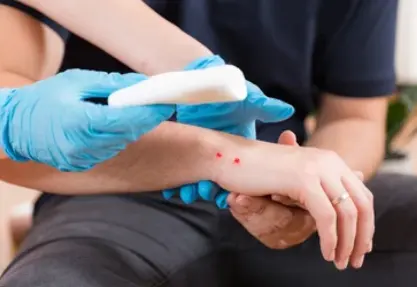 Welcome
Welcome
“May all be happy, may all be healed, may all be at peace and may no one ever suffer."
Pityriasis rubra pilaris - Generics
Pityriasis rubra pilaris (PRP) is a rare inflammatory skin disorder characterized by red scaly patches and thick, rough skin with hair follicles that may appear like goosebumps. It can affect people of all ages and both genders, but it is more common in adults.
The exact cause of PRP is unknown, but it is thought to be related to an abnormal immune response. It can also occur as a result of a genetic mutation or infection. The condition is not contagious and is not related to poor hygiene or allergies.
Symptoms of PRP:
- Red, scaly patches that may be itchy or painful
- Thick, rough skin with hair follicles that may resemble goosebumps
- Skin that may appear shiny or waxy
- Nail changes, such as thickening, ridges, or separation from the nail bed
- Joint pain or stiffness in some cases
There are several types of PRP, including classical adult-onset, atypical adult-onset, and juvenile-onset. Each type has its own unique characteristics and may require different treatment approaches.
Treatment of PRP:
- There is no cure for PRP, and treatment focuses on managing symptoms.
- Topical corticosteroids, moisturizers, and emollients may help relieve itching and reduce inflammation.
- Systemic medications, such as oral retinoids, immunosuppressants, or biologics, may be prescribed in severe cases.
- Phototherapy, which involves exposure to ultraviolet light, may also be used to improve symptoms.
The prognosis for PRP varies depending on the type and severity of the condition. Some cases may resolve on their own, while others may require long-term management.
In conclusion, pityriasis rubra pilaris is a rare inflammatory skin disorder characterized by red scaly patches and thick, rough skin with hair follicles that may appear like goosebumps. It can be managed with topical and systemic medications, as well as phototherapy. The prognosis varies depending on the type and severity of the condition, and it is important to seek medical attention for proper evaluation and treatment.

Squamous cell or testicul...

Aggression

Rabies prophylaxis

Erysipeloid

Vaginal atrophy

Parenteral fat emulsions

Iron Folic acid and zinc...

Hypophosphataemia
Pityriasis rubra pilaris, পাইটারিয়াসিস রুবরা পিলারিস
To be happy, beautiful, healthy, wealthy, hale and long-lived stay with DM3S.